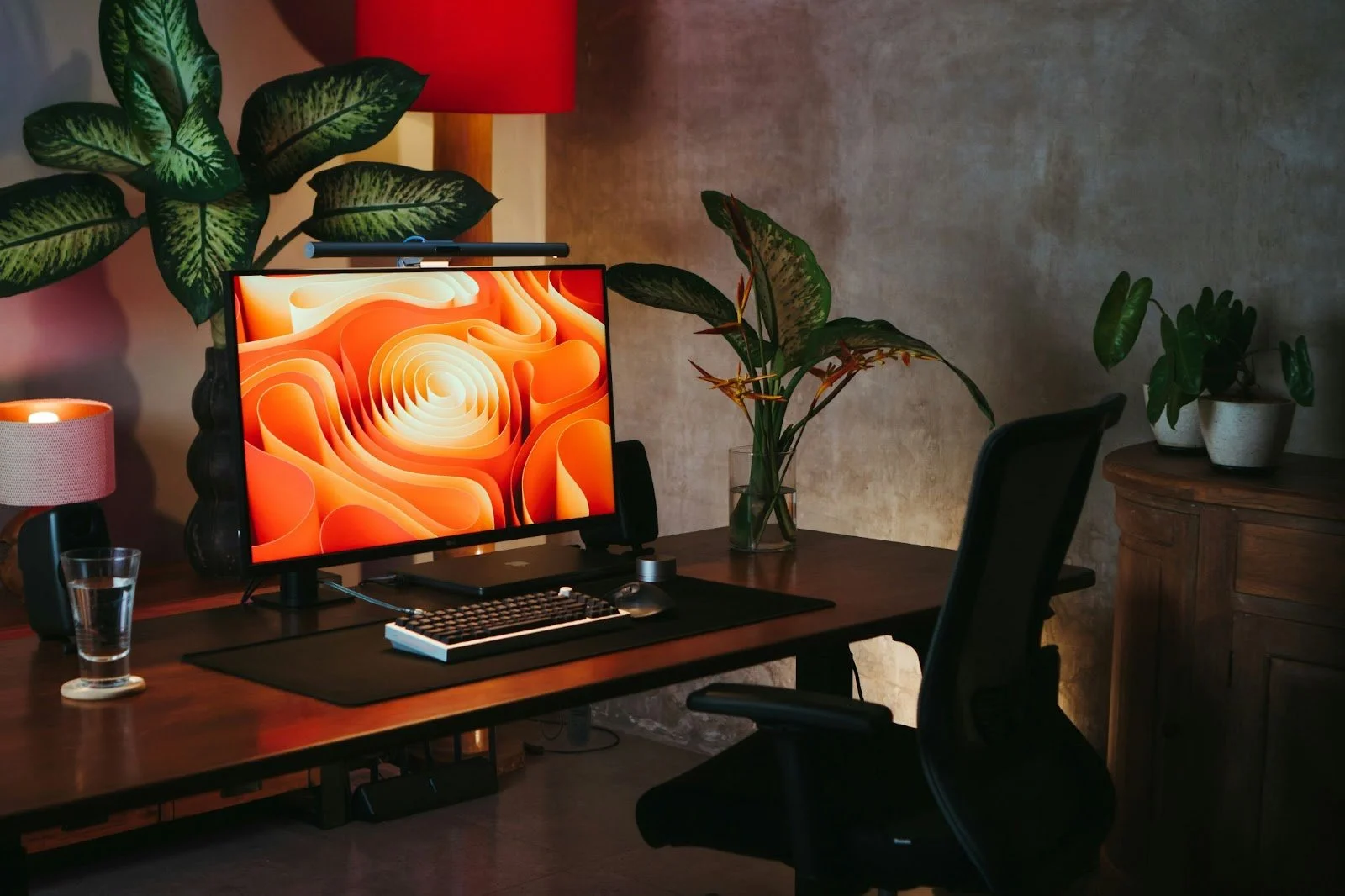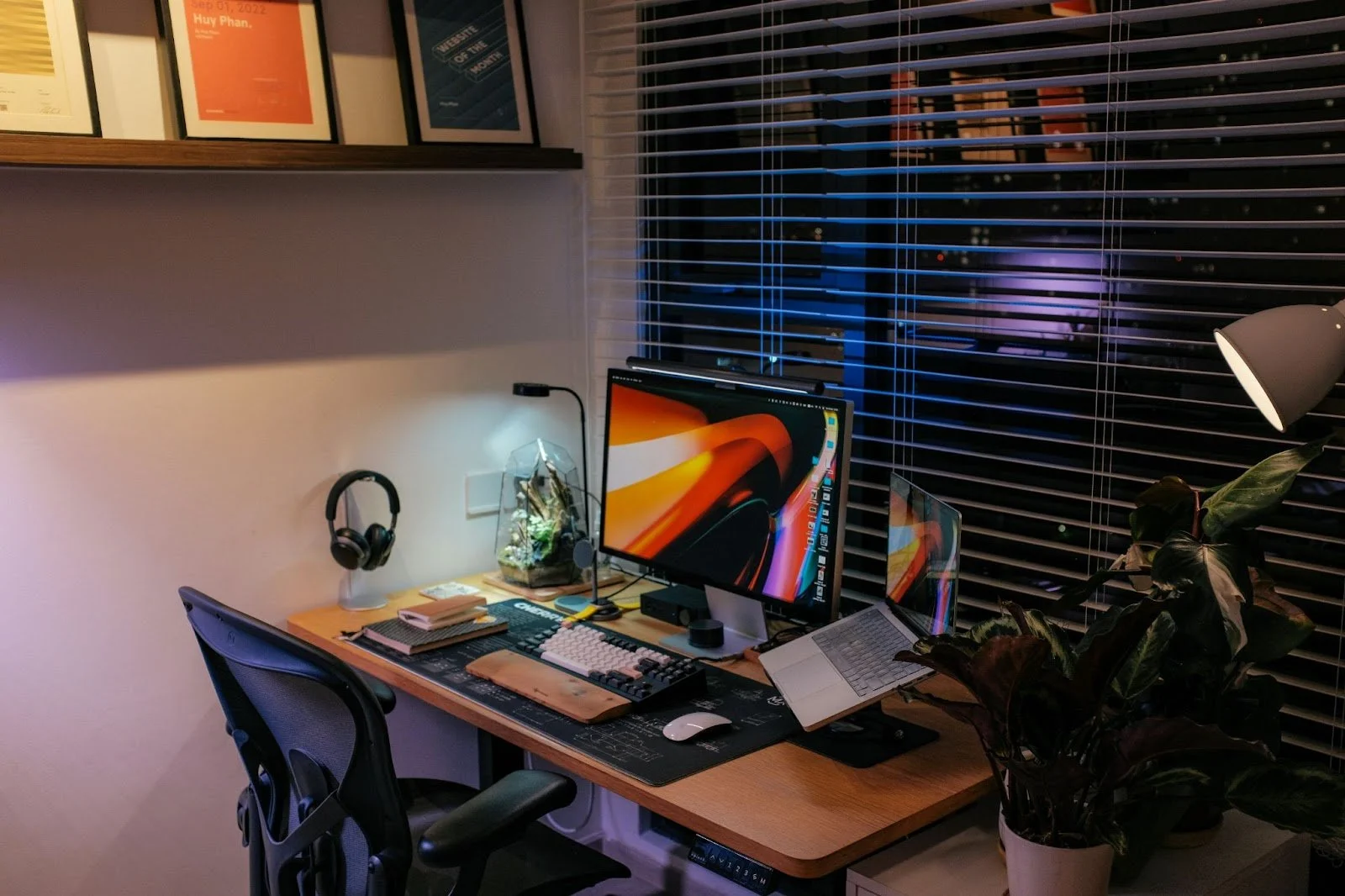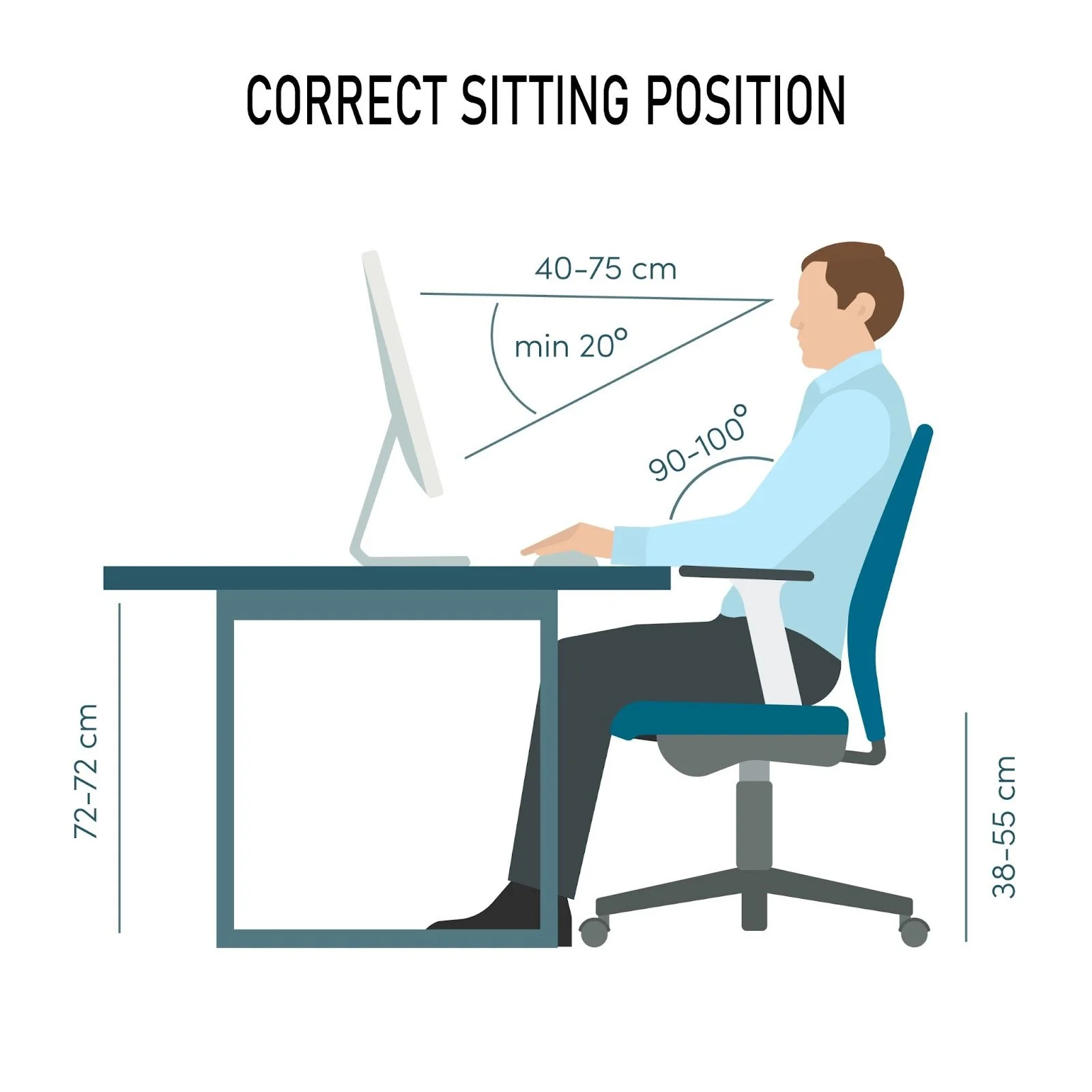How to Adjust Your Home Office Setup to Prevent Digital Eye Strain
Digital eye strain, also known as computer vision syndrome, has become a common issue for professionals working from home. The shift to remote work has led to increased screen time, often without the ergonomic considerations found in traditional office settings. Many workers experience dry eyes, blurry vision, headaches, and shoulder tension due to poor posture and inadequate lighting.
This guide outlines practical ways to adjust your home office setup to reduce the risk of digital eye strain. From screen distance and lighting to posture alignment and regular breaks, each tip is grounded in advice from optometry professionals. If you’re already experiencing symptoms, you can learn more about effective relief strategies from this guide to digital eye strain relief.
What Is Digital Eye Strain and Why It Happens
Digital eye strain occurs from prolonged use of digital devices, including computers, tablets, and smartphones. The eye muscles become overworked when continuously focusing on near objects, resulting in discomfort and fatigue. Blinking rates also decrease when staring at screens, which contributes to dryness and irritation.
Common symptoms include:
Blurred or double vision
Dry, itchy, or watery eyes
Neck and shoulder pain
Headaches
Difficulty focusing after screen use
These symptoms often stem from poor ergonomics, improper lighting, and the absence of routine breaks. Fortunately, making a few strategic adjustments can greatly reduce their occurrence.
Screen Distance and Monitor Positioning
Maintaining the correct distance between your eyes and your screen is a crucial step in preventing visual fatigue. Optometry associations recommend placing your screen between 50 and 70 centimetres (20–28 inches) away from your eyes. The top of the monitor should sit just below eye level, allowing your gaze to angle slightly downward.
Recommended Setup:
| Element | Optimal Position |
|---|---|
| Monitor Distance | 50–70 cm from the eyes |
| Monitor Height | Top of screen just below eye level |
| Viewing Angle | 15–20 degrees downward |
Using adjustable monitor stands or arms helps maintain the correct height. For laptop users, consider a laptop riser combined with an external keyboard and mouse to achieve better alignment.
Desk Lighting and Glare Reduction
Improper lighting can strain the eyes by forcing them to work harder to interpret contrast and detail. Natural light is ideal, but should be managed carefully. Avoid placing screens directly in front of or behind windows, as this creates glare or backlighting.
Overhead lighting should be soft and diffused. Position task lamps to the side of the screen rather than in front, and use warm, low-glare LED bulbs. Anti-glare screen filters can also help reduce reflections from ambient light or overhead sources.
Key Tips to Reduce Glare:
Keep windows perpendicular to your screen.
Install adjustable blinds or curtains.
Use matte monitor screens or attach anti-glare filters.
Choose light sources with colour temperatures between 2700K and 3000K.
Ergonomic Seating and Posture Support
The way you sit affects more than just your back — it also plays a role in visual comfort. Poor posture can cause neck and shoulder strain, which affects eye muscle stability and increases tension. Investing in an ergonomic chair allows your spine to stay supported and keeps your head and neck properly aligned with your screen.
Ideal Sitting Posture:
Feet flat on the floor or on a footrest
Knees bent at a 90-degree angle
Back fully supported by the chair’s backrest
Elbows at or just below desk height
Wrists are in a neutral position when typing
Ensure your chair has adjustable height and lumbar support. Consider adding a cushion if needed to help maintain spinal curvature. For prolonged work periods, alternate between sitting and standing using a sit-stand desk where possible.
Regular Breaks and the 20-20-20 Rule
Continuous screen use leads to eye muscle fatigue and dryness. Introducing short, structured breaks into your routine can prevent cumulative strain. The 20-20-20 rule is an effective method: every 20 minutes, look at an object 6 metres (20 feet) away for at least 20 seconds.
This technique allows eye muscles to relax and restores a natural blinking rate. Breaks can also include light stretching, which boosts blood circulation and reduces physical fatigue. Use reminders, timers, or dedicated apps to build these pauses into your schedule.
Additional Break Strategies:
Look out of a window during breaks
Perform neck rolls and shoulder shrugs
Stand and walk every hour for 2–3 minutes
Use the Pomodoro technique (25 minutes focus, 5 minutes rest)
Taking these micro-breaks consistently helps to reset visual focus and supports overall well-being during long workdays.
Screen Settings and Blue Light Management
Screen settings affect how much effort your eyes require to interpret content. Brightness that is too high or too low can cause visual discomfort. Match your screen brightness to the ambient lighting in your room to maintain consistent contrast. Increase font sizes and use high-contrast settings for better visibility.
Blue light, emitted by digital screens, may disrupt sleep patterns and contribute to fatigue. While the evidence on its direct link to eye strain is still debated, reducing exposure in the evening is widely recommended.
Practical Adjustments:
Enable Night Shift (Apple) or Night Light (Windows)
Use Dark Mode in apps and browsers
Install third-party apps like f.lux for screen temperature control
Avoid screens at least 30 minutes before bed
Blue light glasses can offer an extra layer of protection, although they should complement — not replace — good screen habits.
Creating a Vision-Friendly Home Office Checklist
Use this checklist to assess and optimise your current workspace. Each element supports visual comfort and posture.
Home Office Eye Comfort Checklist:
Screen 50–70 cm from eyes
Monitor top just below eye level
Adjustable lighting with no direct glare
Anti-glare screen protection (if needed)
Ergonomic chair with lumbar support
Desk height aligned with elbows
Feet flat or supported
Follow 20-20-20 rule throughout the day
Enable blue light filters in evening
When to Seek Professional Advice
If you continue to experience persistent symptoms such as headaches, visual fatigue, or eye discomfort even after workspace adjustments, it may be time to consult an optometrist.
An eye health check can rule out underlying issues such as dry eye syndrome, uncorrected vision errors, or muscular strain. Make sure to mention your screen use habits and share any changes you've made to your workspace.
Regular eye exams — at least once every two years — are strongly advised for anyone spending extended hours on digital devices.
Final Thoughts
Digital eye strain doesn’t have to be part of working from home. With a few intentional changes to your screen setup, lighting, seating, and work habits, you can drastically improve comfort and protect your vision.
Begin by making one improvement today. Small changes like adjusting monitor height or enabling a screen filter can provide instant relief.



